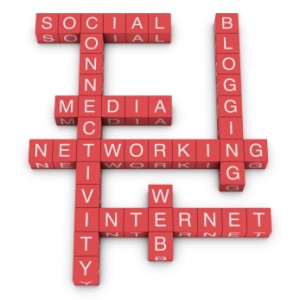 Information grows differently than industry or agriculture.
Information grows differently than industry or agriculture.
Thus hundreds of years of understanding about how to grow Industrial-Age businesses doesn’t really apply to many Information Age endeavors.
Indeed, some of the lessons of how to grow a farm in the Agricultural Age didn’t necessarily translate to Industrial Age corporate growth, although some did.
The key is to think in a new context and apply lessons within the contemporary environment.
Information, and by extension Information-Age organizations and ideas, grow in a certain way.
Instead of the Industrial model of building a foundation, then adding walls, buttresses and finally a roof, informational models grow like waves.
Imagine the ripples caused when a pebble falls into a lake. The waves repeat many times, spreading out and impacting the world around them. Eventually they dissipate and disappear, leaving the world altered, if only a little. Additional pebbles are needed to repeat the process.
And unlike the Industrial Age penchant for building institutions that last forever, information impacts the world and then moves on to something else when enough ripples have accomplished the goal.
The Industrial modus operandi was to build an institution to achieve a goal, and then to focus on the survival and growth of the institution — even if this required abandoning the original purpose for which the institution was established.
In contrast, information sets out to inform, keeps going until this is accomplished, and then moves on to other agendas.
Likewise, where Industrial institutions attempt to control how their work is perceived and utilized, information shares, informs, and leaves (and trusts) those who receive the information to use it as needed and to pass it on.
Good information is naturally improved by various applications, and it is perpetuated by those who receive and utilize it.
There are eight levels of informational waves:
1: At first, information simply is. It exists.
It is in the state and process of being. This is the most important level of informational ideas, institutions and thinkers.
The quality, breadth, depth and wisdom of information matters. Getting it right (right from the beginning) is vital.
Even more important is sharing information for the right reason. If information is shared for the wrong reasons, for example, the information itself is tainted and changed by this fact.
In the Industrial Age, things were considered good information if they were true, but information has a higher standard. Unless informational ideas are shared for the right reasons, the information isn’t reliable.
In short, the first level of information is purity.
Any item of information is a thing, and it has a purpose. In sharing information or building informational institutions or relationships, pure reasons are essential. Without them, the information itself is unreliable.
Note that pure information is one of the most powerful things in the world. It has been called “the power of the word,” “the power of an idea whose time has come,” “resonance,” and a number of other things.
When information is shared by the right person at the right time for the right reasons, it has great and lasting power.
2: Good information that is promoted and shared for the right reasons becomes an interactive wave.
This greatly increases the impact and influence of the information, spreading it to those who need it.
Of course, bad information passed on for the wrong reasons is also interactive and therefore very destructive. Anybody who has ever started a rumor, for example, has probably witnessed how quickly it spreads and how much pain and hurt it can cause.
In the long term, however, tainted information has no lasting power. Information promoters do best when they send out ideas far and wide, openly sharing and personally applying the “new” information they have learned.
3: Next comes the communicative wave.
This occurs where people purposely set out to communicate information to set groups or to everyone.
This wave can be marketed, spun, or twisted for the benefit of various groups and people, but the pure information will shine through and those seeking wisdom will see through the shades of spin and opinion and resonate with what they need to learn.
They will then naturally pass on their contributions and lessons learned and the value of the information will increase.
Synergy kicks in at this point and the value of the information spirals out to many who are seeking it.
4: A linear wave captures much of the information at this level and translates it to specific uses, fields, disciplines, written or spoken or digitized venues and delivers its essence in numerous formats.
Information institutions or thinkers frequently introduce their views to the world in this format. Of course, it existed before they composed, organized or created their specific work, but their creation adds value, quality and even wisdom to the information.
By its nature, information spreads, and those who add to its value without trying to enslave its essence help it spread and increase its ability to serve.
Those who try to control it, in contrast, find that their creation is devalued, their creativity stifled, and their flow of additional information violated.
Unlike land or capital in the Agrarian and Industrial eras, respectively, information is not meant to be owned. The wave of open source programs and wiki media applications harnesses this abundant and cooperative mentality.
Note that I am not arguing here for uncompensated use of copyrighted software, technology, artistic or other proprietary creations.
I believe that original inventions, innovations and creations should benefit those who risked, invested, worked and created. And organizations and governments have every right to keep certain things secret or proprietary.
But pure information in ideas, principles and the flow of wisdom is not the same as one’s proprietary creation–nobody can (or should) lock up or control the flow of pure information.
As long as individuals and institutions own their creation, but without trying to control thought and inspiration, it can benefit them and many others.
5: Eventually information is captured in numerous linear waves which together form a multimedia wave.
In other words, at a certain point pure information is simultaneously delivered in many forms and from numerous sources which reinforce the messages, lessons and value of the original information.
Leaders can help spread this wave by delivering the information multiple times and in manifold ways.
6: The next step occurs when information comes alive.
This happens were the essence of the information is felt.
When I hear a story and it spurs an emotional response, for example, all the earlier waves combine and impact how I receive the information.
In a similar way, waves far from where the pebble dropped are bigger and carry a lot more water than those right where the pebble fell.
A similar level in Industrial institutions was branding–where a given brand, name or logo carried a repeating emotional charge. In the informational world, however, each additional interaction communicates new information value.
7: Psychological waves come next, and are produced by the transfer of information from one mind to another.
Since all such transfers partake of all the earlier levels of waves (e.g. the person shares his feelings, pure or tainted reasons, multimedia use of voice along with facial expressions and nonverbal cues, etc.), learning from others is an advanced way to receive information.
Because of this, the level of advancement of the person delivering the message has some impact on how the information is delivered.
Still, the condition of the receiver is the most important factor in determining the quality of the reception when the information or signal is pure.
In Industrial marketing this was often dominated by testimonials or infomonials, but informational leaders simply open up and share.
The most powerful of this information often comes from word of mouth, personal stories, and genuine interest in helping others.
Any who truly care about others and share ideas, thoughts or anything else as attempts to help others are partners with information in this process.
The true language of this wave is love, which is why true change most often comes when we feel love or loved.
8: At the highest level, the symbolic wave conveys a packet of information that is amazingly multi-layered and teeming with depth, breadth, context, connections and possibilities.
Shakespeare spoke of being bounded in a nutshell of infinite space and science teaches that the DNA code of an entire organism is found in each cell.
The symbolic wave could be called a mustard seed, a small token carrying the potential and key to so much more.
Also, at this highest level, the receiver can often break the information into smaller pieces, analyze each of the waves alone or together, and consider each facet of the idea–from its essence to all its potential consequences.
The possibilities are exponential. The information at this level is only limited by the abilities of the user to consider, discover or imagine.
Those seeking such information are on a quest for inspiration–be it limited to one question, or as broad as a life of searching.
Because the symbolic wave of information is so powerful, those who ask shall receive; the universe is friendly, and when the student is ready the teacher will appear.
(That last paragraph makes me want to be sure everyone knows how important it is to read Free the Beagle by Roy Williams. It’s a fun read, not homework.)
***********************************
 Oliver DeMille is the founder and former president of George Wythe University, a co-founder of the Center for Social Leadership, and a co-creator of TJEd Online.
Oliver DeMille is the founder and former president of George Wythe University, a co-founder of the Center for Social Leadership, and a co-creator of TJEd Online.
He is the author of A Thomas Jefferson Education: Teaching a Generation of Leaders for the 21st Century, and The Coming Aristocracy: Education & the Future of Freedom.
Oliver is dedicated to promoting freedom through leadership education. He and his wife Rachel are raising their eight children in Cedar City, Utah.






Speak Your Mind
You must be logged in to post a comment.